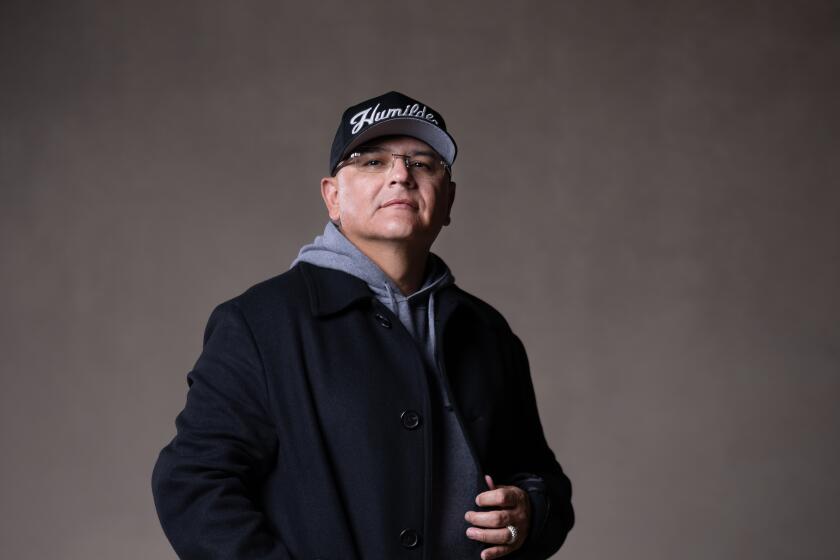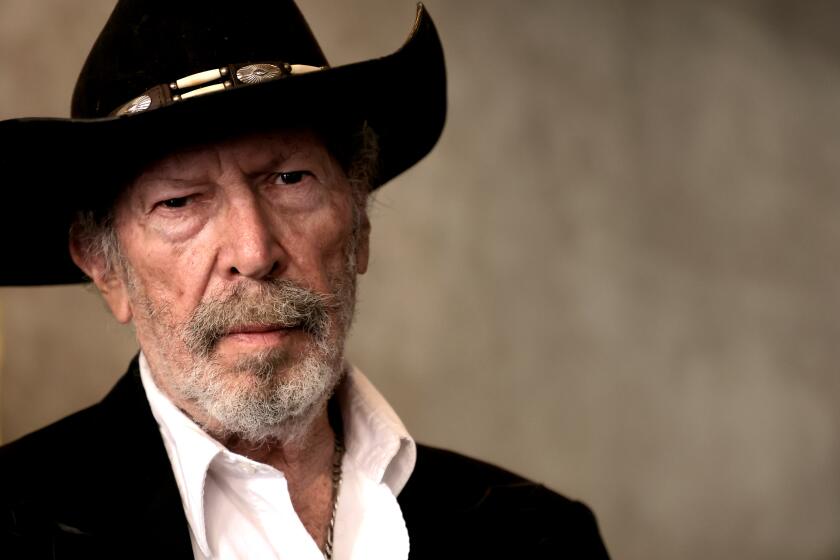Veteran R&B; ‘Honker’ Glides Into Jazz : Tenor Sax Player Strives for the Sound of ‘40s and ‘50s Greats
Saxophonist Jerry Jumonville makes it no secret that he wants his listeners to have a good time.
When he takes the bandstand at Jax in Glendale, where he’s been a Thursday regular for three years, the easy-swinging jazz and R&B; tunes he plays are picked to please the audience, as well as himself. His remarks on tunes are informative; introductions of band members are friendly.
“Even if you don’t like jazz, you’re going to like Jerry Jumonville,” he said.
Jumonville’s ingratiating style is a throwback to another era when a successful musician had to be an entertainer as well as an artist. But the idea that he might be old-fashioned doesn’t bother Jumonville in the slightest--it’s something he actively pursues.
If you close your eyes and listen intently to Jumonville’s rich tenor sax sound, you might imagine you are hearing such 1940s and ‘50s giants of the horn as Eddie (Lockjaw) Davis, Gene Ammons or Ben Webster.
“The guys I listen to--’Lockjaw,’ Johnny Griffin, Sonny Rollins, Gene Ammons, Hank Crawford, ‘Fathead’ Newman--every note they play is a gem, nothing’s out of place,” Jumonville, 47, said before a recent performance at Jax, a bustling restaurant and jazz club. “That’s what I’m striving for. To be correct. Make beautiful music.”
“I used to think I wanted to play real fast,” he said, speaking with an accent that suggests his New Orleans birthplace. “But I found that making every note in a phrase count is more important than just flashin’ . A lot of younger guys, they go fast but you hear all kind of notes that aren’t supposed to be there.”
Though he was raised on and first played (on sax) the music of Fats Domino and Little Richard, Jumonville also had an ear for jazz. “My friends and I played R&B; for a living, but we all listened to jazz too. We all wanted to be jazz players from the very beginning.”
Until recently, jazz wasn’t a big part of his career. After he arrived in Los Angeles in the mid-1960s, Jumonville made much of his living playing with rock stars. He’s a featured soloist on Rod Stewart’s “Tonight’s the Night,” the Doobie Brothers’ “Toulouse Street,” Dr. John’s “Right Time, Right Place” and Stevie Wonder’s “Characters.” He’s toured with and arranged the horn sections for Bonnie Raitt, Delaney and Bonnie, Rickie Lee Jones (his unaccompanied version of “Harlem Nocturne” opened shows on her 1981 and 1982 tours) and Nicolette Larson.
Some Jumonville live dates are still rock and R&B-oriented.; Tonight and Saturday he will lead a New Orleans-style band for singers Ernie K. Doe and Clarence (Frogman) Henry at the Club Lingerie and he plays danceable tunes during appearances at the Nucleus Nuance in West Hollywood (his next engagement there is Feb. 15).
Nonetheless, mainstream jazz is the music that means the most to him. “I hope I’m developing into a jazz player, a good sax player, a soloist,” he said. “I’m trying to become more intricate, play more jazz. I started there and that’s what I still love.”
Jumonville is self-taught. He learned by copying the solos of his favorite artists and that’s still his modus operandi.
“I was recently fooling around with a Duke Ellington tune, ‘Drop Me Off in Harlem,’ of which I have a version with Ben Webster,” he said. “I learned the melody and had started to copy the solo, but then I decided to write out my own solo. Then I played with the record and breathed just about where he does. From that you pretty much learn the language, learn the figures that fit over a given chord change.
“I do that on a lot of tunes. I used to copy them note for note, but now I get pet phrases and get the gist of it. Then I make up my own stuff. That way I can be pretty close to what they did, and be my way too.” His own stuff includes a recent LP, the R&B-flavored; “Jump City” (Miracle Mile Jazz).
Stepping on the small bandstand at Jax with his quartet, Jumonville launched into “Tippin’ In,” which has been recorded by Doc Severinsen’s “Tonight Show” orchestra, and established a relaxed, ear-pleasing mood. He played with a full, smoky tone and paid attention to details, offering one series of nicely placed notes after another, each adorned with colorful melodic flourishes. He swayed as he played, sometimes holding his horn high above the microphone he used only for announcements--”If I play into it, I’ll be way too loud for the room,” he quipped--and now and then utilized body language to emphasize notes, as when he almost dropped to his knees to play some low, growling tones.
Other highlights of the set included “The Second Line,” which sounded a little like “Rock Around the Clock,” “Misty” and “Centerpiece,” a blues by trumpeter Harry (Sweets) Edison.
Afterward, Jumonville joked about his playing. “I don’t get deep, but I romp,” he said, laughing.
Jumonville’s live performances provide the bulk of his income.
“The studio scene has pretty much dried up, and people aren’t using horn sections like they used to. In the ‘70s, you’d write six arrangements for a session, hire the horn section, get double scale for being the section leader. Now they want you to do a solo on spec.”
Seeking work as Jumonville does, without the benefit of management, can be frustrating and depressing.
“It’s not easy,” he said. “You send a club a bio, pictures, reviews and then you don’t even get a call. Try to book a hotel, they want a girl singer and a keyboard player who also plays bass. By that time, they don’t even need me, you know what I mean? It’s difficult lately to make a living. No wonder I stay at Jax. It keeps me sane.”
Despite the obstacles, Jumonville knows he’s doing the right thing with his life. “I have a ball when I go to work,” he said. “I’m not ready to quit. I’m not giving up. I’ll make it work.”
More to Read
The biggest entertainment stories
Get our big stories about Hollywood, film, television, music, arts, culture and more right in your inbox as soon as they publish.
You may occasionally receive promotional content from the Los Angeles Times.






